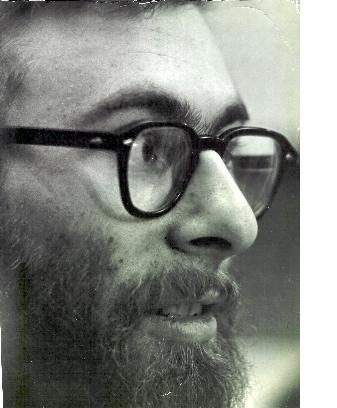Stories
The First Leap:
from Neosho to New York
David Rounds
* * *
My suicide attempts and my experience with Dr. Wilbur sparked an intense interest in psychoanalysis that would last all my life.
When I went home from Columbia College in the summer of 1958, I devoured the Ernest Jones biography of Sigmund Freud, and went I went back to college in the fall, I spent one semester as pre-med with the goal of becoming a doctor and then a psychoanalyst.
At the semester break of my sophomore year, I took a year off to go into full-time psychoanalysis. Somehow or other I ended up with a chain-smoking analyst, Dr Caemmerer, whose office was on Lexington Avenue just where the Metro North trains go undergound. I keep three big notebooks of the dream analyses that I did with him over the next few years. On my lunch hours from my clerk job at Recordak on 8th Street and Broadway, I haunted the used book shops and collected a set of volumes of the Psychoanalytic Study of the Child and various psychoanalytic books such as those of Anna Freud and Georges Devereux. The novel I was writing at the time, Master of the House, was especially influenced by my interests in psychoanalysis.

Picture taken for article
in Columbia College Today,
Winter 1961-1962
On my return to Columbia, I specialized in writing papers with a psychoanalytic interpretation of whatever subject was at hand, be it literature, art or philosophy (see list). I won acclaim for the psychoanalytic paper published in the campus literary magazine, King's Crown Essays, on the Demonology of Jesus. Dr. Wilbur told me that I had succeeded in a psychoanalytic understanding of Jesus where all others had failed. It is still a good read almost a half century later, so I attach a copy here.
Over the years, many of Freud's observations of psychodynamics, such as the unconscious and the superego, have stuck with me and enabled me to understand otherwise inexplicable events. On several occasions I have come to know genuine paranoid personalities masking repressed homosexuality as described by Freud in the case of Schreiber. Conversations with my psychoanalyst girlfriend Perel helped me to deal with the megalomania of Federico Mayor. Freud's analysis of the role of anger in mourning, which is explained in Mourning and Melancholia, was especially valuable whenever I had to deal with mourning, especially in my two divorces as well as the deaths of my parents.
Although I did not make direct use of psychoanalysis in the one psychology book that I published or the one theoretical paper I wrote on mental illness, they are indirectly influenced in the sense that they are quite compatible with psychoanalytic interpretations of specific events. The only Freudian theory that I could not accept was his notion of a "death instinct". I can't help but think that if he had been able to read my history of the culture of war, he would have seen that the "instinct" he described is actually our deep culture, so deep that many mistake it for instinct. The Seville Statement and the conceptual formulation of the culture of peace has enabled me to come to an understanding which I did not have when I began.
At one point I even had the chance to make a contribution to the scientific underpinning of psychoanalysis. A graduate student of mine at Wesleyan named Maz Burbank undertook video filming of the fights of children in a nursery school. When we analyzed the videos in slow motion we found that before striking another child with the classic overhead beat, the attacking child would look back over his shoulder under the upraised arm to see if there was an adult about to intervene and stop the attack. I could see in the head and eye movements, the early motor patterns that would later be suppressed and leave only the brain pathways of the superego intact. Just as half a century earlier, Vygotsky had described the introjection of speech into thinking with suppression of the actual motor movements of speech, so, too, we had seen the introjection of looking back into the superego with the suppression of the motor movements of head and eye turning. Unfortunately, we never published the data and it remains one of the "experiments I never did", or at least, in this case, never published.
I went to see psychotherapists in association with both of my divorces. In 1979, when Nina went to a psychotherapist, she convinced me to see a Dr. Peters for several sessions, but I did not find it useful. On the other hand, when Lindsay and I headed for divorce in 2009, I found a great deal of help in my sessions with Dr. Joel Allison, especially coming to grips with the enormous emotional ambivalence that both of us had to deal with.
 |
Stages
1986-1992
Fall of Soviet Empire
1992-1997
UNESCO Culture of Peace Programme